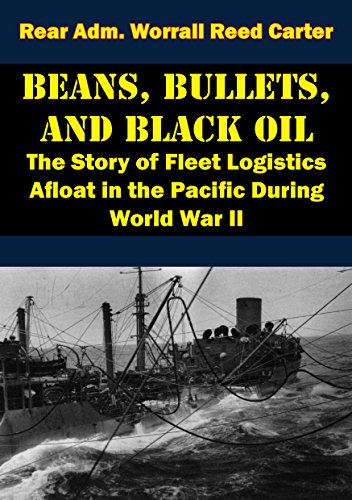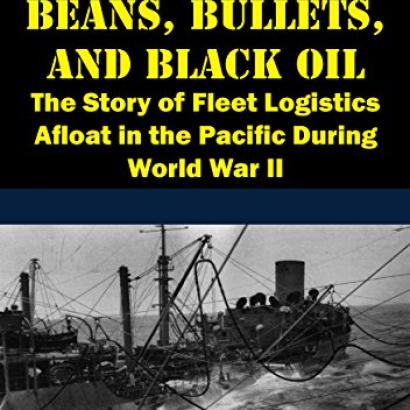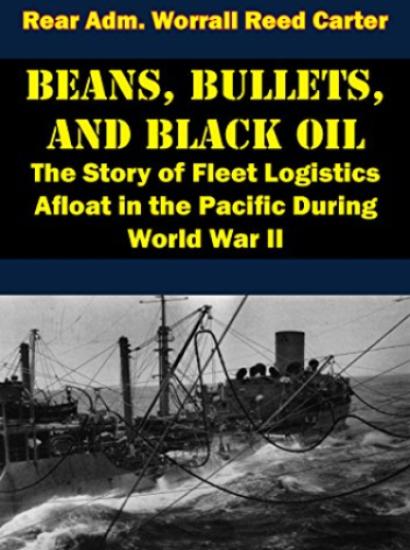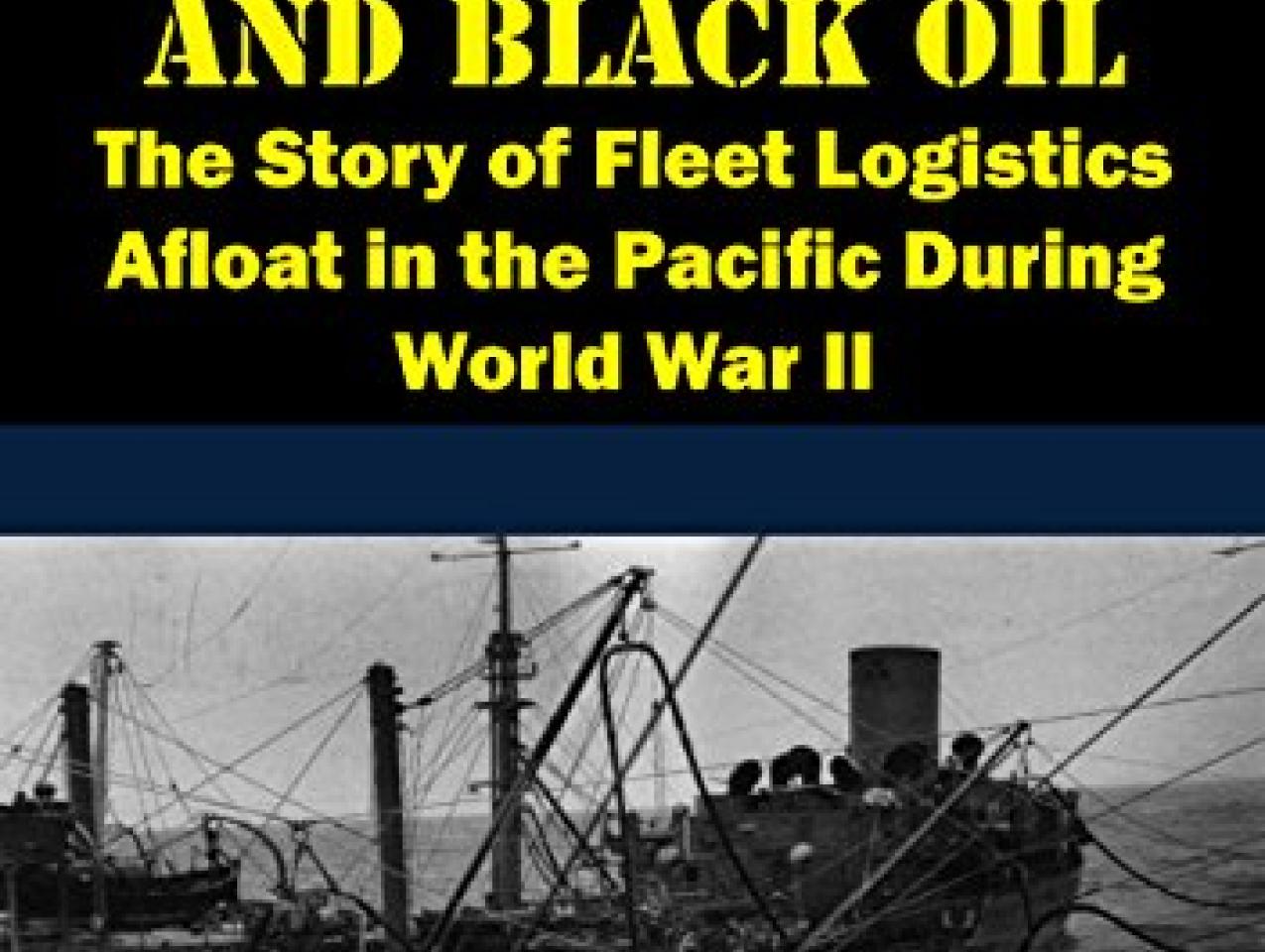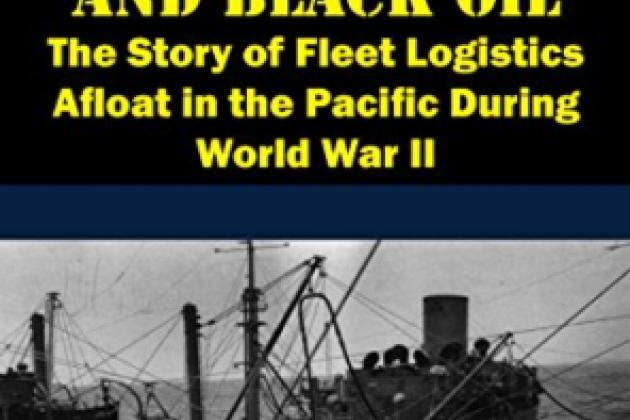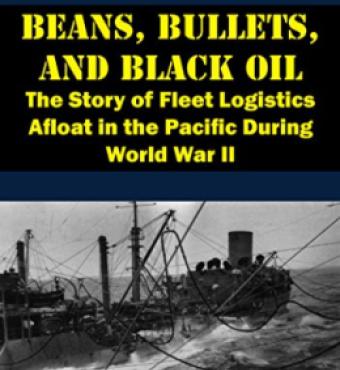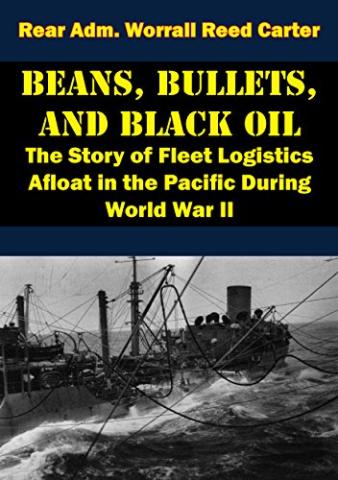- History
- Military
In the introduction to this detailed history of the operations that kept his combatant forces supplied with everything from ordnance to water, Admiral Raymond A. Spruance writes, “a sound logistic plan is the foundation upon which a war operation should be based.” That might leave the impression that this is a dry treatise in logistics science, but this overlooked gem tells the story of how the U.S. Navy created mobile logistics service squadrons to support Spruance’s “island-hopping” assaults on Japan’s eastern defense perimeter in the Central Pacific. These floating facilities enabled the fleet to conduct offensive operations farther from traditional supply bases than had been thought possible.
From the attack on Pearl Harbor until Guadalcanal was secured in late 1942, the United States and its allies were mostly on the defensive. Unable to counter Japanese air assaults, the allies were forced to concede bases across the Java Sea, and fuel supplies ran so low that tankers had to steam 5,000 miles to Iran to obtain oil, a journey some vessels did not survive. The Guadalcanal campaign laid bare the fundamental need for tight coordination between carrier-based air power, amphibious assault troops, and the logistical services that supported both. The withdrawal of carrier air support for ground forces on Guadalcanal after only two days exposed U.S. logistics vessels to Japanese attacks, impeding delivery of supplies and leaving the ground force in a precarious situation for nearly two weeks.
The author played a principal role in developing the operating concepts, technical organization, and command structures that led to the creation of mobile floating service squadrons. Answering his demands for action, the Navy sent Carter to the South Pacific in the fall of 1942 as Commander Naval Bases, supporting early operations in the Solomon and Aleutian Islands, and writing up what became the organizational plan for Service Squadron Ten. Spruance encountered Carter serving as a convoy commodore during the Marshall Islands campaign, and in February 1944 tasked him to build up Service Squadron Ten to support the increasing tempo of the island-hopping strategy.
Vested with overall administrative responsibility for service force activities afloat in the forward areas, Service Squadron Ten established subordinate divisions to handle operations in active areas. Comprised of specialized vessels and floating equipment that could be towed across the Central Pacific, service squadrons set up floating bases in the protected anchorages of the lagoons found at most islands, providing food, fuel, water, ammunition, and other supplies, and operating sectional dry docks where sailors could repair battle damage to vessels as large as 33,000-ton battleships, close to the scene of action.
The volume includes ample photographs of refueling underway at sea and other logistics operations, as well as examples of many of the specialized vessels that comprised the mobile floating service force. An Appendix lists the commanding officers of the principal vessels engaged in logistics work under the Commander Service Force Pacific, and a Glossary explains the many abbreviations present in a work that encompasses both military organization and logistical operations.
The work originated from a request by the President of the Naval War College in Newport, RI, with the support of the Chief of Naval Operations and the Deputy CNO for Logistics. Written in spare prose characteristic of after-action reports, Carter’s narrative functions like a well-designed logistics system, drawing its elegance from utilitarian achievement of a seemingly mundane, yet essential, objective. Key campaigns are covered in detail, as are the particulars of specialized operations such as ship repair and handling ordnance during rearmament at sea. The narrative sometimes grinds through vessels counts, but does a good job conveying the difficulty of estimating requirements for fuel, munitions, and parts for the increasingly complex weapons, planes, and communications equipment that were put into use during the war, tasks often undertaken by personnel with little experience in logistics.
While the main storyline focuses on the development of the floating logistical fleet, Carter provides perspective and context through discussions of technical inter-war arguments about the effectiveness of floating naval support services—opponents viewed at-sea refueling as an emergency stunt rather than a routine capability that could increase the effectiveness of combatant vessels—and the propensity of politicians to favor shore-based force concepts that would deliver funding to facilities in their districts. The budget cuts of the early FDR Administration further constricted naval building.
From just 51 vessels of all types in 1940, the Navy’s service force stood at 315 craft by the war’s end. As it became clear that defeating Japan would require the U.S. military to move across the Pacific region’s vast distances one island at a time, the Navy devised the floating mobile base force, which proved able enough to sustain Spruance’s fleet at sea for nearly three months while the invasion of Okinawa was organized.
With the Pacific region once again at the top of the strategic agenda, Beans, Bullets, and Black Oil serves as a reminder of the need to assess whether U.S. operational plans and logistics capabilities are coordinated—and suited to the challenges that lie ahead.







